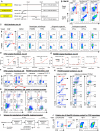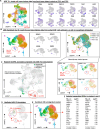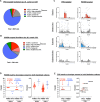This is a preprint.
Rapid enrichment of progenitor exhausted neoantigen-specific CD8 T cells from peripheral blood
- PMID: 40462919
- PMCID: PMC12132521
- DOI: 10.1101/2025.05.11.653315
Rapid enrichment of progenitor exhausted neoantigen-specific CD8 T cells from peripheral blood
Abstract
Neoantigen-reactive peripheral blood lymphocytes (NeoPBL) are tumor-specific T cells found at ultra-low frequencies in the blood. Unlike tumor-infiltrating lymphocytes (TIL), NeoPBL exist in a favorable less dysfunctional phenotypic state in vivo, but their rarity has precluded their effective use as cell therapy. Leveraging a priori knowledge of bona fide neoantigens, we combined high-intensity neoantigen stimulation with bead extraction of neoantigen peptide-pulsed target cells to enable the enrichment of NeoPBL to frequencies comparable to ex vivo cultured TIL over a 28-day period. Throughout this process, NeoPBL demonstrate specific reactivity against autologous tumor organoids and maintain memory-like features, including elevated expression of CD28 and TCF7. We additionally demonstrate that NeoPBL reactivity is polyclonal, encompassing multiple clonotypes that are detectable within in vivo TIL populations, underscoring physiological specificity for the targeted neoantigens. This streamlined process yields clinically relevant cell doses and enables identification and expansion of blood-derived neoantigen-specific TCRs. By potentially avoiding additional surgical risks and protracted delays of TIL and individualized TCR-engineered methods, the NeoPBL platform may have clinical and practical advantages. Ultimately, NeoPBL combines intrinsic cell fitness, minimal invasiveness and rapidity to potentially facilitate personalized adoptive cell therapy for cancer.
Figures




References
-
- Onimus K. et al. 101 Expansion of tumor-infiltrating lymphocytes (TIL) using static bag for the clinical manufacturing rapid expansion protocol (REP) process. Regul. Young Investig. Award Abstr. A110–A110 (2021) doi: 10.1136/jitc-2021-sitc2021.101. - DOI
Publication types
LinkOut - more resources
Full Text Sources
Research Materials
